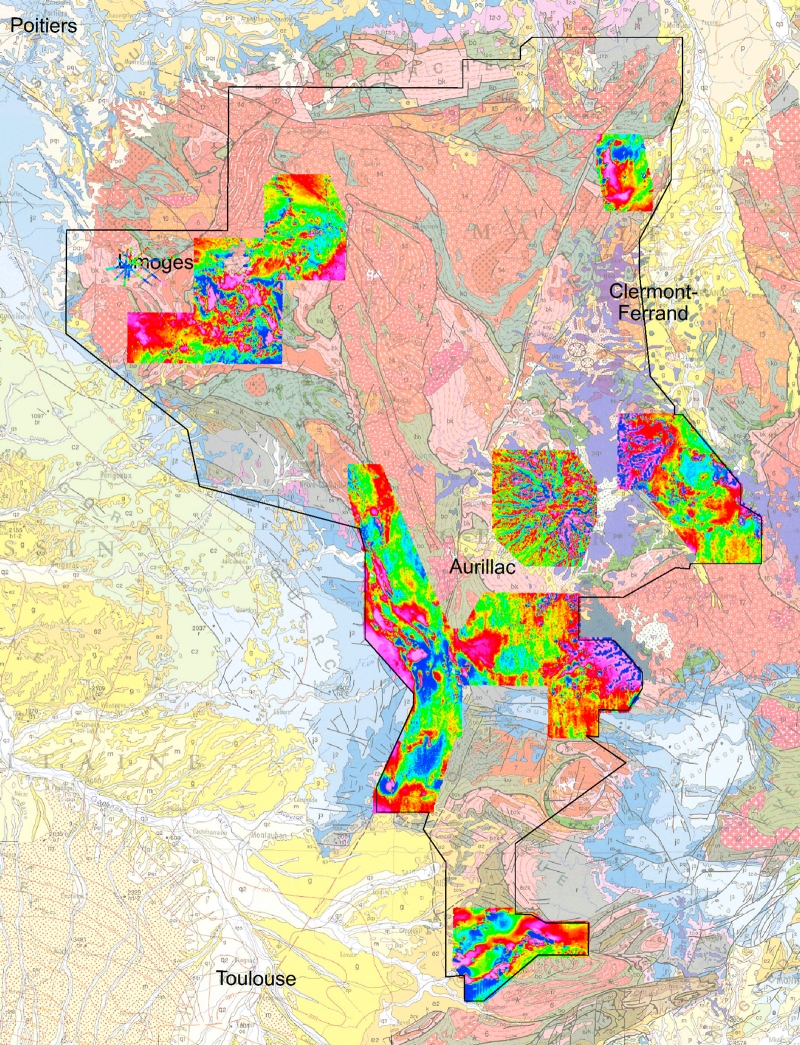Coverage of the three-year, airborne geophysical survey of the western Massif Central (black outline) and the areas covered in 2022. © BRGM
Geology and knowledge of the subsurface
The partner interview
Stéphanie Dupuy-Lyon Director General for Spatial Planning, Housing and the Natural Environment, French Ministry of Ecological Transition and Territorial Cohesion (DGALN)
Can you give us a brief overview of the DGALN’s mission?
Stéphanie Dupuy-Lyon — The General Directorate for Spatial Planning, Housing and the Natural Environment (DGALN) is one of the five directorates under the responsibility of the French Ministry of Ecological Transition, Territorial Cohesion, Energy Transition and Maritime Affairs. Its mission is to establish, manage and assess policies on urban planning, construction, housing, landscapes, biodiversity, water management and non-energy minerals. It is responsible for twelve public policies, all of which address issues linked to the ground and natural resources.
How does BRGM help you achieve your missions?
S.D.-L. — BRGM provides us with crucial expertise in a wide range of fields, notably for the sustainable management of water resources, coastal risks and soil erosion or prospecting and assessing the potential of non-energy mineral resources. The fundamental geological knowledge and expertise it provides are essential for guiding decisions about complex, multi-factor public policies, and for providing relevant information to citizens. One of the missions that we assigned to BRGM is of particularly strategic importance for our national sovereignty: we need to improve our knowledge of the subsurface in order to secure our supply of critical metals and meet the challenges of the ecological transition through a new mining policy.
What tangible projects are being carried out to address these challenges?
S.D.-L. — One example is the lithium mine scheduled to open in Echassières in the Allier département by 2028 (which will enable 70,000 batteries to be manufactured per year). This project would never have happened if we had not had detailed knowledge of the subsurface. Another example is the French Observatory of Mineral Resources for Industrial Sectors (OFREMI) which was set up following the publication of the Varin report concerning the supply of strategic metals. This is managed by BRGM. The observatory’s mission is to map value chains in order to identify any potential vulnerabilities. In addition, a geophysical survey campaign is currently being conducted in the western Massif Central to update our mining inventory. In fact we have reached a turning point. In order to ensure the success of the energy transition, the consumption of critical metals will need to achieve levels that are simply unprecedented in the history of humankind. At the same time, the opening of new mining sites tends to be slowed down due to “acceptability” issues. So, we need an overall view, on nationwide and regional levels, and to be prepared to open new mines based on a sustainable model. BRGM is a key operator for the French State and can help us with this process. It also plays a key role in helping France accelerate the decarbonisation of its economy.






